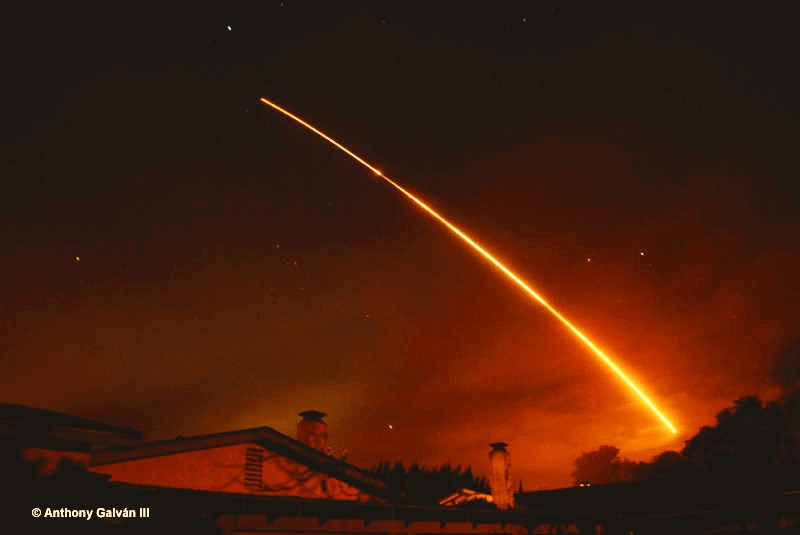Taurus XL-fails to reach orbit, Vandenberg AFB, CA
March 4, 2011, 2:09 am PDT

Taurus XL lifts off from Vandenberg Air Force Base.
Exposure: 59 seconds @ f/3.5
ISO 400
Camera/Lens: Fuji S2, DSLR, Nikon 18-200mm.
Location: Goleta, California.
A Taurus XL rocket carrying a NASA climate-probing satellite payload and three hitchhikers successfully lifted off Friday morning from Vandenberg Air Force Base, California at 2:09am PST. However, 300 seconds into the launch a shroud separation malfunction has failed to place the payloads into orbit.
NASA's Glory spacecraft was be placed in a polar orbit to study how atmospheric particles called aerosols and the Sun's energy influence Earth's climate. The remote-sensing Earth-orbiting observatory was designed to achieve two primary mission objectives:
- collect data on the physical and chemical properties as well as the spatial and temporal distributions of aerosols.
continue collection of total solar irradiance data for the long-term climate
Three smaller satellites had hitched a ride on the Taurus XL as well. The smaller satellites (CubeSats) are the Explorer 1 Prime (Montana State University), Hermes (University of Colorado), and KySat-1 (Kentucky Space Consortium). These smaller payloads were to use communication frequencies used by Ham Radio operators to transmit data to their respective universities.
CubeSats or nano satellites are roughly one liter in volume and are designed and built by students and teachers to allow schools to gain experience in the design and operation of satellites.
The Explorer 1 [PRIME] (E1P) was a Montana Space Grant Consortium Cubesat-class satellite in development by the Space Science and Engineering Laboratory (SSEL) at Montana State University.
Hermes is a University of Colorado research satellite that was designed to study fluctuations in the sun's brightness and its impact on Earth's climate.
The KySat-1 satellite was to collect telemetry, take photographs, transfer data to and from the spacecraft using APRS type packets, and serve as a HAM V/U FM digital transceiver.
This is the second launch failure of the system since 2009.
For more information contact Tony Galván.
All images © 2011, Anthony Galván III. Any use without written
permission is strictly prohibited.
